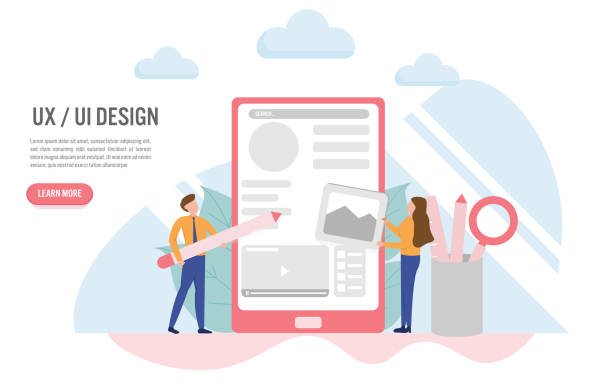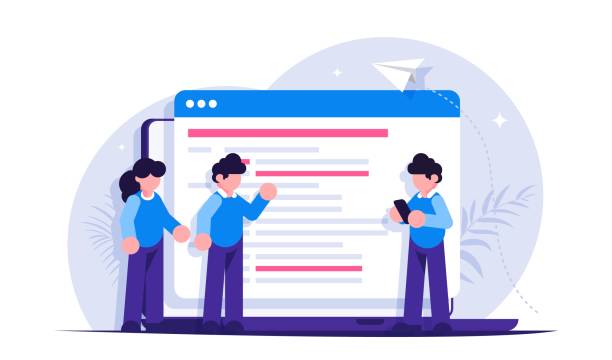The Importance of Secure Website Design in Today’s Digital World

In the current era, where the internet has become an inseparable part of daily life and businesses, the importance of secure website design is more evident than ever.
With increasing reliance on online systems for shopping, banking, communications, and even education, websites have become attractive targets for cyber attackers.
An #insecure_website can lead to the theft of sensitive information, loss of brand reputation, financial damages, and even legal repercussions.
Therefore, attention to #web_security and implementing the principles of #secure_website_design from the very initial stages of development is a vital necessity.
In this comprehensive article, we will delve into the various aspects of website security and provide practical solutions to enhance the security level of online platforms.
This discussion will be valuable educational and analytical content not only for web developers but also for business managers and anyone concerned with protecting their own and their users’ information.
Cyberattacks are becoming more sophisticated every day, and a comprehensive approach to security, including continuous updates, strong encryption protocols, and user education, can make a significant difference in protecting your digital assets.
Secure website design is no longer an option, but a vital requirement for survival and success in the online space.
Are you dissatisfied with your e-commerce site’s low sales?
Rasaweb is your solution for having a professional and high-selling e-commerce site.
✅ Significant increase in sales and revenue
✅ Easy and enjoyable shopping experience for customers
⚡ Get free consultation from Rasaweb now!
Common Website Security Threats

To begin with a secure website design, a deep understanding of the types of cyber threats that websites face is essential.
This section examines some of the most common and destructive attacks that can jeopardize your website’s security.
One of the best-known attacks is SQL Injection, where an attacker injects malicious SQL code into the inputs of a web form to gain access to the database and steal or manipulate sensitive information.
Another type is Cross-Site Scripting (XSS), which allows an attacker to inject malicious scripts into web pages viewable by other users, thereby stealing cookies, session information, or other sensitive data.
DDoS (Distributed Denial of Service) attacks are also a major threat, as they disrupt website services by sending a massive volume of traffic to the server, cutting off access for legitimate users.
Brute Force attacks are carried out by repeatedly trying to guess passwords or security keys.
Also, the presence of known vulnerabilities in Content Management Systems (CMS) like WordPress or Joomla, and their plugins, can be a gateway for intrusion.
An analytical and specialized approach to these threats is the first step towards a secure and sustainable website design.
Identifying potential weaknesses and continuous updates protect your website against many of these attacks.
Key Pillars of Secure Website Design
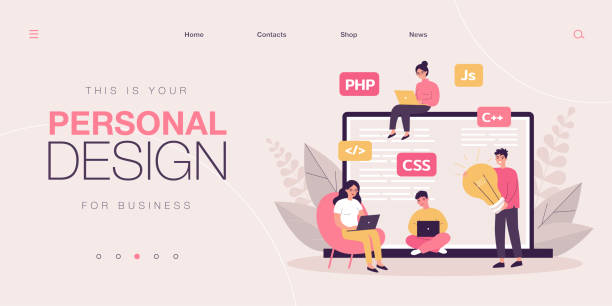
To ensure a secure and reliable website design, implementing several fundamental principles is of paramount importance.
One of the most important is the use of the SSL/TLS protocol, which encrypts communication between the user’s browser and the web server.
This prevents attackers from eavesdropping on sensitive information such as passwords and credit card details and assures users by displaying a padlock icon in the address bar.
Below are the key differences between HTTP and HTTPS, which uses SSL/TLS.
| Feature | HTTP (Insecure) | HTTPS (Secure) |
|---|---|---|
| Data Encryption | No (data is sent as plain text) | Yes (using SSL/TLS) |
| Server Authentication | No | Yes (via SSL certificate) |
| User Trust | Low | High (padlock icon in browser) |
| SEO Impact | Negative | Positive (Google ranking factor) |
| Default Port | 80 | 443 |
In addition to SSL/TLS, implementing secure coding, Input Validation to prevent attacks like SQL Injection and XSS, and using strong password policies are other vital pillars.
Every user input must be carefully checked and sanitized to prevent the injection of malicious code.
Also, user passwords must have a minimum specified length, include uppercase and lowercase letters, numbers, and symbols, and be stored as hashes in the database.
These measures, along with expert guidance, form the foundation of a strong and secure website design.
The Role of Backup and Recovery in Web Security
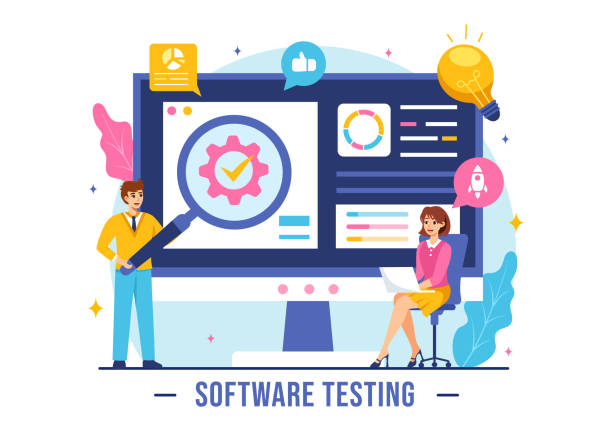
Although preventing cyberattacks is of high importance in secure website design, no system is completely impregnable.
For this reason, planning for disaster scenarios and having a robust backup and recovery system is an integral part of a comprehensive web security strategy.
Regular and automated backups of all website data, including the database, system files, images, and other content, ensure that in the event of a cyberattack, hardware failure, or human error, you can quickly restore your website to its original state.
This is vital educational content that many webmasters overlook.
The absence of up-to-date backups can lead to permanent data loss, long hours of website downtime, and ultimately, financial losses and loss of reputation.
It is important that backups are stored not only on the main server but also in separate and secure locations such as cloud storage or external servers, so that backups remain accessible even if the main server is lost.
In addition to backups, having a Disaster Recovery Plan that specifies the steps for website recovery after a security incident is essential.
This plan should include specific protocols for intrusion detection, problem isolation, malicious code cleanup, and data recovery from the latest healthy backup.
By correctly implementing these principles, even in the event of a successful attack, you will be able to quickly bring your website back online and minimize damages.
This is a key component in maintaining the stability and website security in the long term.
Did you know that a weak corporate website loses you many opportunities daily? Solve this problem forever with professional corporate website design by Rasaweb!
✅ Create a powerful and reliable image of your brand
✅ Targeted attraction of new customers and increased sales
⚡ [Get free website design consultation]
Choosing a Secure Web Host and Its Impact on Site Security
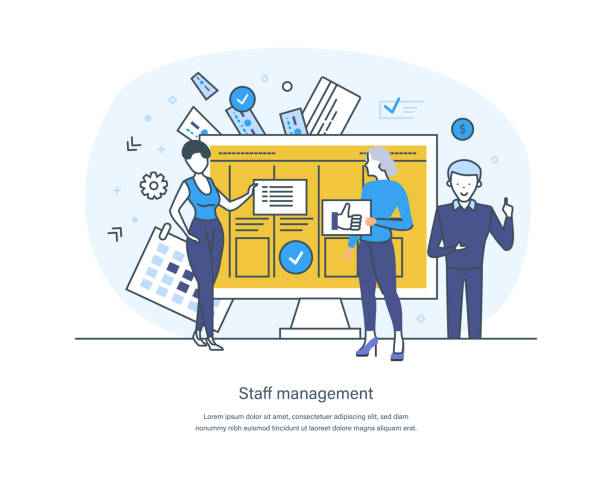
Choosing a suitable web host is a fundamental and often overlooked step in the path of secure website design.
Your website’s security depends not only on its internal coding and configuration but also directly on the server environment where your website resides.
A secure web host provides the necessary infrastructure to protect your website against common threats.
This includes advanced firewalls (WAF), intrusion detection and prevention systems (IDS/IPS), protection against DDoS attacks, and regular server security scans.
Reputable web hosts continuously update their servers, apply security patches, and monitor network traffic to identify and block any suspicious activity.
Using a Content Delivery Network (CDN) can also help enhance security by filtering malicious traffic and reducing the load on the main server.
This is expert guidance for improving the overall website security posture.
Before choosing a web host, important questions must be asked: Do they offer regular backups? Are their servers regularly updated? Do they have firewalls and advanced security systems? How is their technical support in facing security issues? Choosing a web host with a good track record in security and strong support not only makes your website more secure but also gives you peace of mind.
In fact, a significant portion of secure website design depends on the smart choice of infrastructure and hosting services.
Continuous Updates: The Backbone of Secure Website Design

In the fast-paced world of technology, continuous updating is one of the most important yet overlooked aspects of secure website design.
This principle is so vital that it can be considered the backbone of maintaining website security.
Cyber attackers are constantly searching for new vulnerabilities in outdated software, plugins, and themes.
When a vulnerability becomes public, developers quickly release security patches.
If these patches are not applied, your website will become an easy target for attacks.
This includes updating your Content Management System (CMS) (such as WordPress, Joomla, or Drupal), all installed plugins and themes, as well as server software like PHP, MySQL, and web servers (Apache/Nginx).
A typical news content in the field of cybersecurity relates to the discovery of new vulnerabilities and the importance of installing updates.
Ignoring these updates is tantamount to leaving the door open for attackers.
Many successful attacks occur not because of the complexity of the attacks, but due to the failure to apply existing security patches.
For example, the WannaCry ransomware attack that swept the world in 2017 exploited a vulnerability for which Microsoft had released a patch months earlier.
Planning for regular and automatic updates, or at least dedicating specific time to review and install them, can drastically reduce the risk of attacks.
This is a preventive measure that constitutes a large part of the website security process and is essential for a secure website design.
Strong Access Management and Authentication
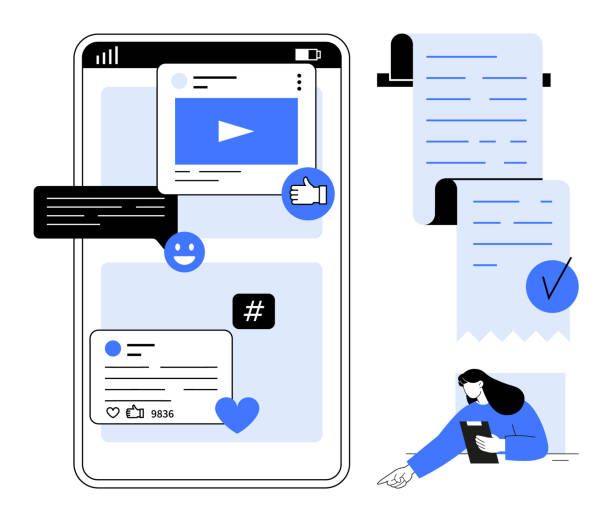
One of the key aspects of secure website design is implementing a robust access management and authentication system.
Many security breaches occur due to weak or compromised credentials.
Defining appropriate user roles and applying the Principle of Least Privilege means that each user or system only has access to the resources and functionalities required to perform their tasks.
For example, an editor does not need access to server settings or the database.
| User Role | Access Level (Example) | Security Importance |
|---|---|---|
| Administrator | Full access to all sections and settings of the website and server | Highest Risk; requires the strongest security measures |
| Editor | Access to publish and edit content (posts and pages only) | Medium risk; restrict access to technical settings |
| Author | Access to create and edit their own posts | Low risk; limited to their own content |
| Regular User (Subscriber/Customer) | Access to personal profile, order history (in e-commerce stores) | Lower risk; focus on protecting personal data |
Furthermore, Multi-Factor Authentication (MFA) adds a crucial layer of security.
With MFA, in addition to a password, the user needs to provide a second authentication factor to log in, such as a code sent to a mobile phone or a fingerprint.
This prevents unauthorized access even if the user’s password is stolen.
The use of Multi-Factor Authentication is strongly recommended for all user accounts with high access levels, especially administrative accounts.
This specialized and educational approach not only guarantees a secure website design but also enhances the overall security of user data.
Proper access management and implementation of strong authentication methods are the foundation of any secure website.
Penetration Testing and Vulnerability Assessment
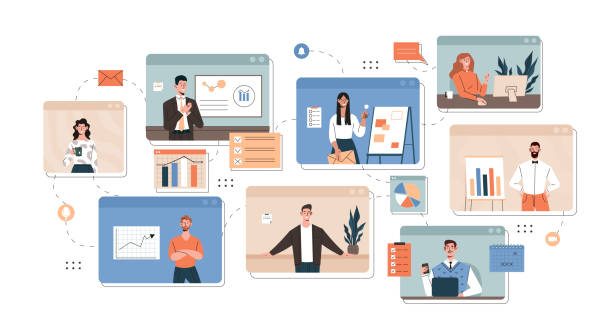
After implementing the principles of secure website design, the next step to ensure the effectiveness of security measures is to conduct Penetration Testing and Vulnerability Assessment.
These processes help you identify and address weaknesses and security gaps before attackers discover and exploit them.
Penetration testing is a simulation of a real cyberattack carried out by security professionals with the aim of finding vulnerabilities and assessing the system’s resistance to attacks.
This can include attempts at SQL injection, XSS attacks, attempts to bypass authentication, and other penetration techniques.
Vulnerability assessment, often performed automatically using scanner tools, identifies known vulnerabilities in systems and applications.
These scans can be run regularly and on schedule to ensure that no new vulnerabilities have been introduced with updates or new changes.
This analytical approach creates a questioning content: Is your website truly secure, or do you just think it is?
Finding and fixing these vulnerabilities before they are exploited by malicious actors can save you from irreversible damages.
Reports from penetration testing and vulnerability assessment provide valuable insights into potential weaknesses and help the development team make necessary corrections.
This process is a continuous cycle, not a one-time action; websites and threats are constantly evolving, and regular security audits are essential for maintaining a secure website design.
Did you know that a weak corporate website loses you many opportunities daily? Solve this problem forever with professional corporate website design by Rasaweb!
✅ Create a powerful and reliable image of your brand
✅ Targeted attraction of new customers and increased sales
⚡ [Get free website design consultation]
User Awareness and Security Training

Even the most advanced secure website design measures can be vulnerable to human error.
Therefore, increasing user awareness and providing security training are crucial components of a comprehensive web security strategy.
Users, whether website administrators or regular visitors, can inadvertently become system weaknesses.
Attacks such as Phishing and Social Engineering directly target users to obtain their sensitive information.
Educating users on how to identify phishing emails, the importance of using strong and unique passwords, enabling multi-factor authentication, and not clicking on suspicious links can significantly reduce risk.
These trainings can be provided in engaging yet educational formats, such as infographics, short videos, or even small games, to help users understand the concepts as effectively as possible.
For administrators and staff who have access to the website’s administrative panel, more specialized training on secure coding practices, file management, and monitoring suspicious activities is essential.
They should also be encouraged not to use unsecured public Wi-Fi networks to access the administration panel.
Collective awareness and vigilance are strong deterrents against cyberattacks.
A website cannot be completely secure unless its users also have a clear understanding of their responsibilities in maintaining security.
This comprehensive guide demonstrates that secure website design is not limited to technical issues but also includes fostering a security culture among all stakeholders.
The Future of Secure Website Design and Emerging Challenges

With the rapid advancement of technology, the field of secure website design also faces new challenges and opportunities.
Cyber attackers are constantly devising new methods to circumvent security measures, and this requires security professionals to always stay one step ahead.
One important trend is the use of Artificial Intelligence (AI) and Machine Learning (ML) in cybersecurity.
These technologies can identify suspicious traffic patterns with greater speed and accuracy, predict DDoS attacks, and even detect unknown threats.
On the other hand, blockchain technology also has significant potential to enhance website security, especially in decentralized authentication and data integrity protection.
This analytical and news content demonstrates how emerging technologies can contribute to improving security.
However, the same technologies that can strengthen security are also used by attackers.
AI-powered attacks and the use of automated tools can make attacks faster and more sophisticated.
Increased use of the Internet of Things (IoT) and its connection with websites also poses new security challenges.
The security of IoT devices, which often have inherent vulnerabilities, can affect the overall security of the web ecosystem.
Overall, the future of website security requires a proactive and adaptive approach.
Focusing on international cooperation, threat intelligence sharing, and investment in research and development is essential to tackle emerging challenges.
Secure website design in the future will mean joining a continuous flow of innovation and vigilance.
Frequently Asked Questions
| Question | Answer |
|---|---|
| 1. What does secure website design mean? | Secure website design means creating a website that is resistant to cyberattacks and protects user and server information. |
| 2. Why is security important in website design? | To prevent data breaches, protect user privacy, maintain user trust, and avoid financial and reputational damages. |
| 3. What are the most common web vulnerabilities? | SQL Injection, Cross-Site Scripting (XSS), Cross-Site Request Forgery (CSRF), Broken Authentication, and Security Misconfiguration. |
| 4. How can SQL Injection be prevented? | By using Prepared Statements / Parameterized Queries, ORMs, and Input Validation. |
| 5. What is the role of HTTPS and SSL/TLS in site security? | HTTPS encrypts the communication between the user’s browser and the server using the SSL/TLS protocol, preventing eavesdropping and data manipulation. |
| 6. What measures should be taken to prevent XSS attacks? | Input Validation, Output Encoding to prevent malicious code execution, and using Content Security Policy (CSP). |
| 7. What does a strong password policy include? | Enforcing the use of long passwords, a combination of uppercase and lowercase letters, numbers, and special characters, and preventing reuse. |
| 8. How does Two-Factor Authentication (2FA) help with security? | Even if a user’s password is compromised, the attacker cannot access the account without access to the second authentication factor (such as an SMS code or an app). |
| 9. What is a Web Application Firewall (WAF) and what is its use? | A WAF is a firewall that monitors and filters HTTP traffic between a web application and the Internet to prevent common web attacks like SQL injection and XSS. |
| 10. Why are regular updates of software and libraries important? | Updates often include security patches to fix discovered vulnerabilities. Failure to update can expose the site to new attacks. |
And other services of Rasaweb advertising agency in the field of advertising
Smart Reportage: A new service for increasing digital branding through dedicated programming.
Smart Sales Automation: A combination of creativity and technology to improve SEO ranking through SEO-focused content strategy.
Smart Digital Advertising: Designed for businesses looking for online growth through attractive UI design.
Smart Custom Software: A fast and efficient solution to improve SEO ranking with a focus on SEO-focused content strategy.
Smart Marketplace: A fast and efficient solution to increase sales with a focus on Google Ads management.
And more than a hundred other services in the field of internet advertising, advertising consultation, and organizational solutions
Internet Advertising | Advertising Strategy | Advertorial
Resources
Website Security Tips
Data Protection in Web Design
Common Web Vulnerabilities
The Importance of SSL/TLS
?At Rasaweb Afarin Digital Marketing Agency, we help your business shine brightly in the online world. From secure and professional website design to comprehensive SEO strategies and targeted content creation, we are your reliable partner on the path to digital growth.
📍 Tehran, Mirdamad Street, next to Bank Markazi, Kazerun Jonoubi Alley, Ramin Alley No. 6

